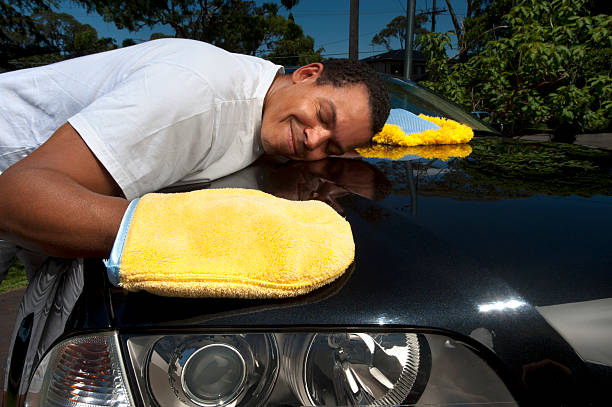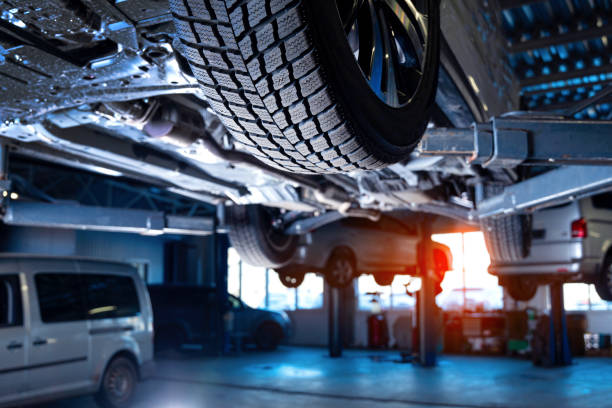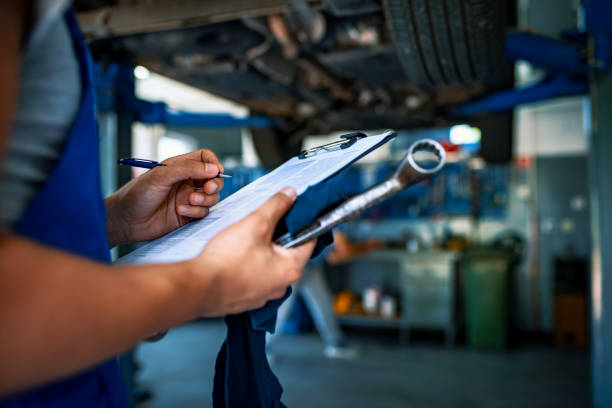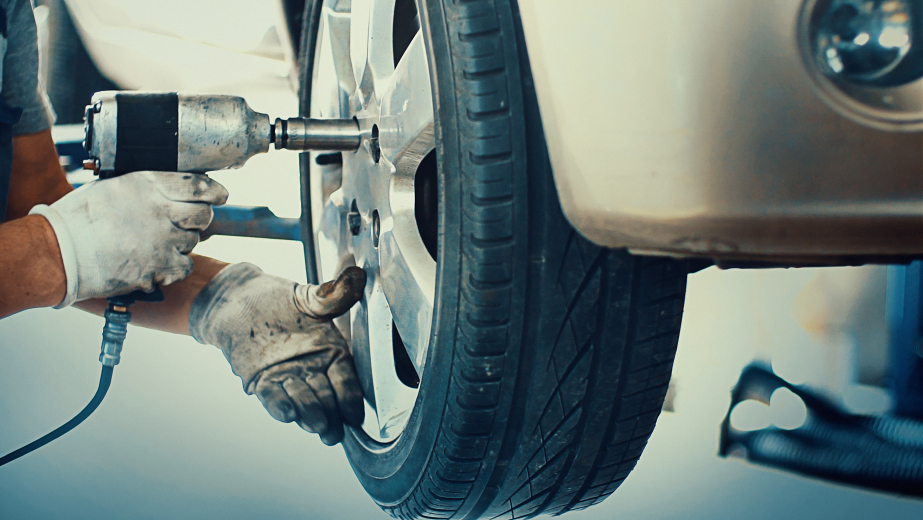Keeping Your Coolant Fresh: Preventing Overheating Woes
In the realm of automotive care, few things are as crucial as maintaining your vehicle’s cooling system. Overheating can wreak havoc on your engine, leading to costly repairs and potential breakdowns. The primary defense against this automotive nightmare? Your coolant. In this comprehensive guide, we’ll delve into the importance of keeping your coolant fresh and how it plays a pivotal role in preventing overheating.
The Coolant Chronicles: Understanding Its Role
Before diving into the nitty-gritty of coolant maintenance, let’s grasp why it’s so indispensable. Coolant, also known as antifreeze, is a specialized fluid designed to regulate your engine’s temperature. It circulates through the engine, absorbing excess heat and transferring it to the radiator, where it dissipates into the air.
But coolant isn’t just water and a dash of color. It’s a carefully formulated mixture of water and additives like ethylene glycol or propylene glycol. These additives enhance its boiling point, lower its freezing point, and inhibit corrosion and rust within the cooling system.
Signs of a Cooling Crisis
Like any automotive component, coolant doesn’t last forever. Over time, it degrades, losing its effectiveness and leaving your engine vulnerable to overheating. But how do you know when it’s time to bid farewell to your old coolant? Keep an eye out for these warning signs:
- Rising Temperature Gauge: If your temperature gauge consistently creeps into the red zone, it’s a clear indicator that your engine is running hotter than it should. Don’t ignore it; investigate the cause promptly.
- Low Coolant Level: A sudden drop in your coolant level suggests a leak in the system or evaporation due to overheating. Either scenario demands immediate attention.
- Discolored Coolant: Fresh coolant typically boasts a vibrant hue, whether it’s green, orange, pink, or blue, depending on the type. If your coolant appears murky or discolored, it’s likely contaminated and in dire need of replacement.
- Visible Leaks: Puddles of coolant beneath your vehicle are a telltale sign of a leaky cooling system. Inspect hoses, connections, and the radiator for any signs of seepage.
The Importance of Coolant Flushes
Preventive maintenance is the key to a healthy cooling system, and coolant flushes are at the forefront of this regimen. A coolant flush involves draining the old coolant from the system, flushing it with water to remove impurities, and refilling it with fresh coolant.
But how often should you schedule this vital procedure? While manufacturer recommendations vary, a general rule of thumb is to flush your coolant every two to five years or every 30,000 to 50,000 miles. However, if you frequently drive in extreme temperatures or endure stop-and-go traffic, more frequent flushes may be necessary.
DIY vs. Professional Service
Performing a coolant flush yourself is certainly feasible for seasoned DIY enthusiasts. However, if you’re unfamiliar with automotive maintenance or lack the necessary tools and expertise, entrusting this task to a professional is the safest bet. Automotive technicians possess the know-how and equipment to execute a thorough coolant flush while ensuring no air pockets or contaminants compromise your cooling system.
Selecting the Right Coolant
Choosing the appropriate coolant for your vehicle is paramount. Consult your owner’s manual or inquire with a trusted mechanic to determine the type of coolant recommended for your specific make and model. Mixing incompatible coolant types can lead to chemical reactions, clogs, and corrosion, so stick to the manufacturer’s guidelines.
Tips for Maintaining a Healthy Cooling System
In addition to regular coolant flushes, several maintenance practices can help preserve the longevity and efficiency of your cooling system:
- Monitor Coolant Levels: Routinely check your coolant reservoir and top it off as needed. Maintaining the correct coolant level is crucial for optimal performance, as low coolant levels can lead to inefficient cooling and potential overheating. Remember to use the correct coolant type and mix it with distilled water if dilution is necessary.
- Inspect Hoses and Connections: Cracked, swollen, or brittle hoses can spell trouble for your cooling system. Regularly inspect hoses, connections, and clamps for signs of wear, corrosion, or leaks. Over time, rubber hoses can degrade due to heat and exposure to coolant, so replacing them preemptively can prevent unexpected cooling system failures. Additionally, ensure that hose clamps are tight to prevent coolant leaks.
- Keep the Radiator Clean: Dirt, debris, and bugs can accumulate on the surface of the radiator, obstructing airflow and impeding heat dissipation. Periodically inspect the radiator and its surrounding area for any buildup and clean it using a soft brush or compressed air. Pay close attention to the radiator fins, as bent or damaged fins can hinder airflow. For stubborn debris, consider using a mild detergent or radiator cleaner to thoroughly remove contaminants. Additionally, ensure that the radiator cap is in good condition and seals properly to maintain system pressure.
- Check the Thermostat: The thermostat plays a crucial role in regulating the flow of coolant through the engine. A malfunctioning thermostat can cause the engine to run hotter than normal or prevent it from reaching optimal operating temperature. Periodically test the thermostat for proper operation or consider replacing it as part of your cooling system maintenance routine, especially if you notice irregular temperature fluctuations or overheating incidents.
- Inspect the Water Pump: The water pump is responsible for circulating coolant throughout the engine and radiator. A faulty water pump can result in inadequate coolant flow, leading to overheating. Inspect the water pump for signs of leaks, such as coolant puddles or stains near the pump housing. Additionally, listen for any unusual noises coming from the water pump, as worn bearings or impeller damage can affect its performance. If you suspect a problem with the water pump, have it inspected by a qualified technician and replaced if necessary.
- Flush the Heater Core: Over time, sediment and debris can accumulate in the heater core, reducing its efficiency and impeding coolant flow. Periodically flushing the heater core can help remove built-up deposits and ensure proper operation of your vehicle’s heating system. Consider flushing the heater core as part of your coolant maintenance routine, especially if you notice reduced heating performance or coolant odor inside the vehicle.
- Follow Manufacturer Recommendations: Finally, adhere to the manufacturer’s recommended maintenance schedule for your vehicle’s cooling system. This may include additional tasks such as replacing the radiator cap, inspecting cooling system hoses and components, and testing coolant pH levels. By following these guidelines and staying proactive about cooling system maintenance, you can minimize the risk of overheating and prolong the lifespan of your vehicle’s engine.
Conclusion
Your vehicle’s cooling system is its lifeline, and coolant serves as its guardian against overheating calamities. By prioritizing regular coolant maintenance, including flushes and inspections, you can safeguard your engine’s health and longevity. Remember, a stitch in time saves nine—don’t wait for your temperature gauge to spike before taking action. Keep your coolant fresh, and keep your engine cool for miles to come. With diligence and attention to detail, you can ensure smooth sailing on the road ahead.
Keeping Your Coolant Fresh: Preventing Overheating Woes Read More »







